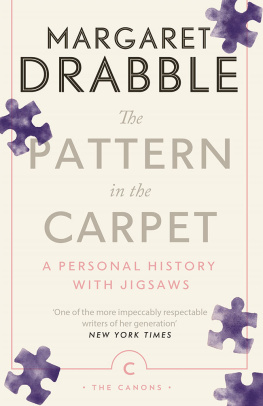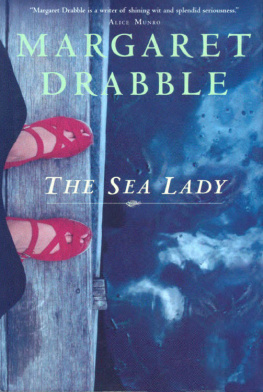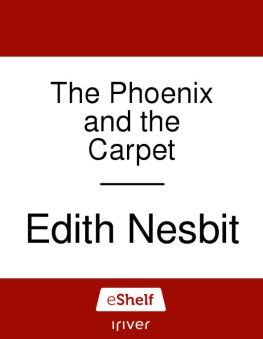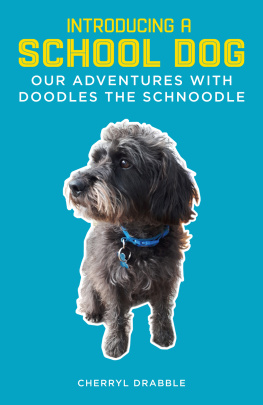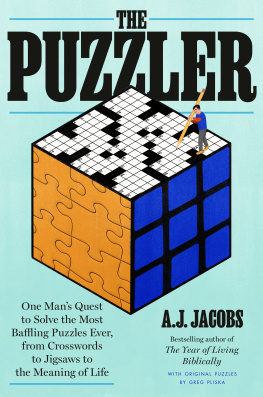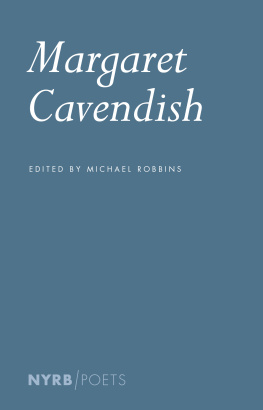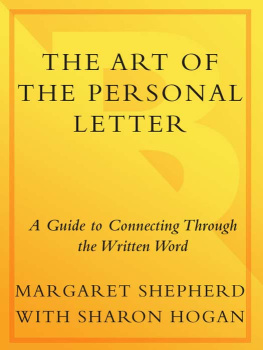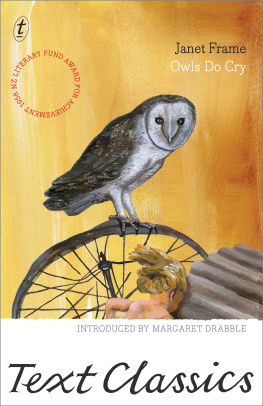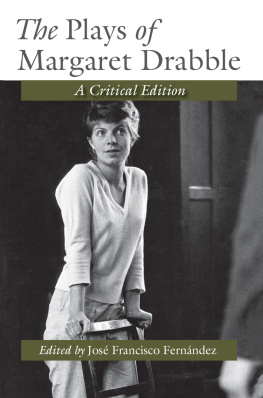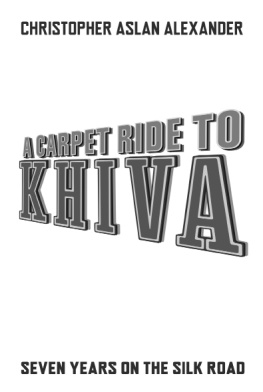Margaret Drabble - The Pattern in the Carpet: A Personal History with Jigsaws
Here you can read online Margaret Drabble - The Pattern in the Carpet: A Personal History with Jigsaws full text of the book (entire story) in english for free. Download pdf and epub, get meaning, cover and reviews about this ebook. year: 2009, publisher: Canongate Books, genre: Non-fiction. Description of the work, (preface) as well as reviews are available. Best literature library LitArk.com created for fans of good reading and offers a wide selection of genres:
Romance novel
Science fiction
Adventure
Detective
Science
History
Home and family
Prose
Art
Politics
Computer
Non-fiction
Religion
Business
Children
Humor
Choose a favorite category and find really read worthwhile books. Enjoy immersion in the world of imagination, feel the emotions of the characters or learn something new for yourself, make an fascinating discovery.
- Book:The Pattern in the Carpet: A Personal History with Jigsaws
- Author:
- Publisher:Canongate Books
- Genre:
- Year:2009
- Rating:5 / 5
- Favourites:Add to favourites
- Your mark:
- 100
- 1
- 2
- 3
- 4
- 5
The Pattern in the Carpet: A Personal History with Jigsaws: summary, description and annotation
We offer to read an annotation, description, summary or preface (depends on what the author of the book "The Pattern in the Carpet: A Personal History with Jigsaws" wrote himself). If you haven't found the necessary information about the book — write in the comments, we will try to find it.
The Pattern in the Carpet: A Personal History with Jigsaws — read online for free the complete book (whole text) full work
Below is the text of the book, divided by pages. System saving the place of the last page read, allows you to conveniently read the book "The Pattern in the Carpet: A Personal History with Jigsaws" online for free, without having to search again every time where you left off. Put a bookmark, and you can go to the page where you finished reading at any time.
Font size:
Interval:
Bookmark:


Dame Margaret Drabble was born in Sheffield in 1939 and was educated at Newnham College, Cambridge. She is the author of eighteen novels including A Summer Bird-Cage, The Millstone, The Peppered Moth, The Red Queen, The Sea Lady, The Pure Gold Baby and, most recently, The Dark Flood Rises. She has also written biographies, screenplays and was the editor of the Oxford Companion to English Literature. She was appointed CBE in 1980, and made DBE in the 2008 Honours list. She was also awarded the 2011 Golden PEN Award for a Lifetimes Distinguished Service to Literature. She is married to the biographer Michael Holroyd.
Also by Margaret Drabble
FICTION
A Summer Bird-Cage
The Garrick Year
The Millstone
Jerusalem the Golden
The Waterfall
The Needles Eye
The Realms of Gold
The Ice Age
The Middle Ground
The Radiant Way
A Natural Curiosity
The Gates of Ivory
The Witch of Exmoor
The Peppered Moth
The Seven Sisters
The Red Queen
The Sea Lady
The Pure Gold Baby
The Dark Flood Rises
SHORT STORIES
A Day in the Life of a Smiling Woman: The Collected Stories
NON-FICTION
Wordsworth (Literature in Perspective series)
Arnold Bennett: A Biography
For Queen and Country
A Writers Britain
The Oxford Companion to English Literature (editor)
Angus Wilson: A Biography


The Canons edition published in Great Britain in 2020 by Canongate Books Ltd, 14 High Street, Edinburgh EH1 1TE
This digital edition first published in 2020 by Canongate Books
canongate.co.uk
Copyright Margaret Drabble, 2009
The right of Margaret Drabble to be identified as the
author of this work has been asserted by her in accordance with the Copyright, Designs and Patents Act 1988
First published in Great Britain in 2009 by Atlantic Books, an imprint of Grove Atlantic Ltd
Every effort has been made to trace copyright holders and obtain their permission for the use of copyright material. The publisher apologises for any errors or omissions and would be grateful if notified of any corrections that should be incorporated in future reprints or editions of this book.
British Library Cataloguing-in-Publication Data
A catalogue record for this book is available on
request from the British Library
ISBN 978 1 786899 971 2
eISBN 978 1 78689 972 9
Designed and typeset in Bembo by Lindsay Nash
For Phyllis Bloor
CONTENTS
LIST OF ILLUSTRATIONS
FOREWORD
T his book is not a memoir, although parts of it may look like a memoir. Nor is it a history of the jigsaw puzzle, although that is what it was once meant to be. It is a hybrid. I have always been more interested in content than in form, and I have never been a tidy writer. My short stories would sprawl into novels, and one of my novels spread into a trilogy. This book started off as a small history of the jigsaw, but it has spiralled off in other directions, and now I am not sure what it is.
I first thought of writing about jigsaws in the autumn of 2005, when my young friend Danny Hahn asked me to nominate an icon for a website. This government-sponsored project was collecting English icons to compose a Portrait of England, at a time when Englishness was the subject of much discussion. At random I chose the jigsaw, and if you click on Drabble and jigsaw and icon you can find what I said. I knew little about jigsaws at this point, but soon discovered that they were indeed an English invention as well as a peculiarly English pastime. I then conceived the idea of writing a longer article on the subject, perhaps even a short book. This, I thought, would keep me busy for a while.
I had recently finished a novel, which I intended to be my last, in which I believed myself to have achieved a state of calm and equilibrium. I was pleased with The Sea Lady and at peace with the world. It had been well understood by those whose judgement I most value, and I had said what I wanted to say. I liked the idea of writing something that would take me away from fiction into a primary world of facts and pictures, and I envisaged a brightly coloured illustrated book, glinting temptingly from the shelves of gallery and museum shops amongst the greetings cards, mugs and calendars portraying images from Van Gogh and Monet. It would make a pleasing Christmas present, packed with gems of esoteric information that I would gather, magpie-like, from libraries and toy museums and conversations with strangers. I would become a jigsaw expert. It would fill my time pleasantly, inoffensively. I didnt think anyone had done it before. I would write a harmless little book that, unlike two of my later novels, would not upset or annoy anybody.
It didnt work out like that.
Not long after I conceived of this project, my husband Michael Holroyd was diagnosed with an advanced form of cancer and we entered a regime of radiotherapy and chemotherapy all too familiar to many of our age. He endured two major operations of hitherto unimagined horror, and our way of life changed. He dealt with this with his usual appearance of detachment and stoicism, but as the months went by I felt myself sinking deep into the paranoia and depression from which I thought I had at last, with the help of the sea lady, emerged. I was at the mercy of ill thoughts. Some of my usual resources for outwitting them, such as taking long solitary walks in the country, were not easily available. I couldnt concentrate much on reading, and television bored me, though DVDs, rented from a film club recommended by my sister Helen, were a help. We were more or less housebound, as we were told to avoid public places because Michaels immune system was weak, and I was afraid of poisoning him, for he was restricted to an unlikely diet consisting largely of white fish, white bread and mashed potato. I have always been a nervous cook, unduly conscious of dietary prohibitions and the plain dislikes of others, and the responsibility of providing food for someone in such a delicate state was a torment.
The jigsaw project came to my rescue. I bought myself a black lacquer table for my study, where I could pass a painless hour or two, assembling little pieces of cardboard into a preordained pattern, and thus regain an illusion of control. But as I sat there, in the large, dark, high-ceilinged London room, in the pool of lamplight, I found my thoughts returning to the evenings I used to spend with my aunt when I was a child. Then I started to think of her old age, and the jigsaws we did together when she was in her eighties. Conscious of my own ageing, I began to wonder whether I might weave these memories into a book, as I explored the nature of childhood.
This was dangerous terrain, and I should have been more wary about entering it, but my resistance was low. I told myself that there was nothing dangerous in my relationship with my aunt, and that my thoughts about her could offend nobody, but this was stupid of me. Any small thing may cause offence. My sister Susan, more widely known as the writer A. S. Byatt, said in an interview somewhere that she was distressed when she found that I had written (many decades ago) about a particular teaset that our family possessed, because she had always wanted to use it herself. She felt I had appropriated something that was not mine. And if a teapot may offend, so may an aunt or a jigsaw. Writers are territorial, and they resent intruders.
Font size:
Interval:
Bookmark:
Similar books «The Pattern in the Carpet: A Personal History with Jigsaws»
Look at similar books to The Pattern in the Carpet: A Personal History with Jigsaws. We have selected literature similar in name and meaning in the hope of providing readers with more options to find new, interesting, not yet read works.
Discussion, reviews of the book The Pattern in the Carpet: A Personal History with Jigsaws and just readers' own opinions. Leave your comments, write what you think about the work, its meaning or the main characters. Specify what exactly you liked and what you didn't like, and why you think so.

